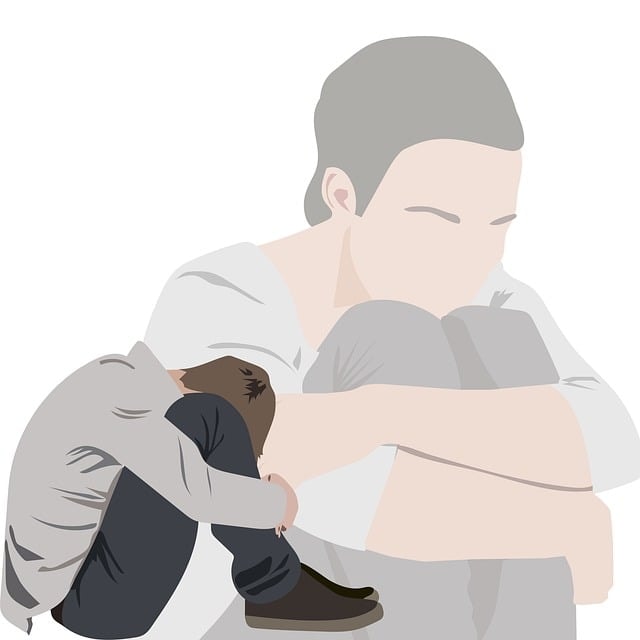Understanding RAD Disorder in Adults: Symptoms and Treatment Options
What is Reactive Attachment Disorder?
Reactive attachment disorder (RAD) is a mental health condition that affects adults by causing challenges in forming and maintaining healthy relationships. According to the American Psychiatric Association’s Diagnostic and Statistical Manual (DSM-5), RAD is a type of attachment disorder often linked to early childhood experiences, such as neglect or abuse. If not properly treated during childhood, these experiences can lead to adults reactive attachment disorder, significantly influencing attachment styles and leading to various mental health issues, including anxiety and depression.
Understanding RAD in adults is essential for mental health professionals to develop effective treatment plans and offer the necessary support to individuals affected by this condition.

Causes and Risk Factors
Reactive attachment disorder often stems from difficult childhood experiences. Key causes and risk factors include:
Neglect and abuse during childhood: A lack of emotional or physical care from a child’s primary caregiver can lead to attachment issues later in life.
Inconsistent caregiving: Emotional unavailability or unpredictable caregiving can hinder the development of secure attachments.
Genetic factors: While genetics do not directly cause RAD, they may play an indirect role in increasing vulnerability to attachment disorders.
Foster care or adoption: Transitions between caregivers or environments can disrupt the development of stable attachments.
Symptoms of RAD in Adults
Adults with reactive attachment disorder may exhibit the following reactive attachment disorder symptoms:
Difficulty forming and maintaining healthy relationships.
Emotional distress and challenges in regulating emotions.
Reluctance to trust others and form deep bonds.
Hesitation to share feelings or show affection.
Struggles with intimacy and emotional connections.
Low self-esteem and difficulty establishing healthy boundaries.
Avoidance of physical intimacy and meaningful connections.
Diagnostic Criteria
The Diagnostic and Statistical Manual of Mental Disorders (DSM-5) outlines the criteria for diagnosing RAD. While the condition is primarily diagnosed in children, adults may experience attachment-related issues stemming from untreated childhood disorders. Diagnosis typically requires a detailed assessment by a mental health professional, who will evaluate symptoms, past experiences, and current challenges. Comprehensive assessments are crucial to differentiate RAD from other mental health conditions, such as autism spectrum disorder.
It is important to note that there is no formal attachment disorder diagnosis for adults. However, attachment issues can persist from untreated attachment disorders during childhood, impacting mental and physical health.
Attachment Styles in Adults
Attachment theory identifies four primary attachment styles that reflect how individuals connect with others:
Secure attachment: Marked by healthy relationships and emotional connections.
Anxious-preoccupied attachment: Involves excessive worry about relationships.
Dismissive-avoidant attachment: Characterized by emotional distance and self-reliance.
Fearful-avoidant attachment: Combines fear of intimacy with difficulty trusting others.
Insecure attachment styles often arise from untreated attachment disorders or childhood neglect and abuse. Childhood experiences can lead to adult attachment disorder, significantly affecting how individuals form relationships and emphasizing the need for therapeutic interventions.

Treatment Approaches
Effective treatment for RAD in adults focuses on attachment-based therapies to address the underlying causes and symptoms. Common approaches include:
Individual therapy: Helps individuals process past experiences and develop healthier thought patterns.
Family therapy: Encourages open communication and strengthens familial relationships. It also equips primary caregivers with essential skills and support to provide a nurturing environment.
Group therapy: Provides a supportive environment to share experiences and build connections.
Attachment therapy: A specialized therapeutic approach aimed at repairing attachment-related issues.
Family Therapy
Family therapy is an essential part of treating reactive attachment disorder (RAD) in adults, as it provides a supportive and structured environment for individuals to work through their attachment issues with their loved ones. Family therapy can help individuals with RAD develop healthier relationships with their family members, improve communication and conflict resolution skills, and work through issues related to trust, intimacy, and emotional regulation.
In family therapy, the therapist works with the individual and their family members to identify and challenge negative patterns of interaction and communication, and develop more positive and supportive ways of interacting. The therapist can also provide education and support to family members on how to best support their loved one with RAD, and help them develop strategies for managing their own emotions and behaviors in response to their loved one’s attachment issues.
Some common goals of family therapy for RAD include:
Improving communication and conflict resolution skills
Building trust and intimacy in relationships
Developing healthy coping strategies and techniques
Improving emotional regulation and management
Enhancing family support and understanding

Effective Therapies for Mental Disorders
Psychotherapy: Assists individuals in identifying and addressing negative thoughts and behaviors. It is important to note that Reactive Attachment Disorder (RAD) can overlap with other mental health conditions, making professional diagnosis crucial.
Cognitive Behavioral Therapy (CBT): Focuses on changing harmful thought patterns to improve emotional regulation.
Attachment therapy: Aims to repair childhood attachment issues and foster healthier relationships.
Couples therapy: Can help address attachment issues within intimate relationships.
Complementary Support Strategies
Complementary strategies can enhance traditional therapy methods and promote emotional well-being. These include:
Mindfulness practices: Techniques like meditation and deep breathing help improve emotional regulation.
Medication management: May address co-occurring conditions like anxiety or depression. It is also crucial to differentiate RAD from autism spectrum disorder to ensure appropriate treatment.
Support networks: Building a network of trusted individuals can provide emotional stability.
Structured routines: Establishing consistency can reduce anxiety and promote security.
Building a Support Network
Building a support network is a crucial part of treating reactive attachment disorder (RAD) in adults, as it provides a foundation of emotional stability and trust. A support network can include family members, friends, support groups, and mental health professionals, and can provide individuals with RAD with a sense of connection and understanding.
Having a strong support network can help individuals with RAD feel less isolated and more supported, and can provide them with a sense of security and stability. A support network can also provide individuals with RAD with access to resources and information, and can help them develop strategies for managing their attachment issues.
Some common ways to build a support network for RAD include:
Joining a support group for individuals with RAD
Connecting with family members and friends who are supportive and understanding
Seeking out mental health professionals who specialize in attachment issues
Participating in online communities and forums for individuals with RAD
Building relationships with others who have experienced similar attachment issues
Coping Mechanisms and Self-Help
Self-help strategies can play a crucial role in managing RAD symptoms. Some effective methods include:
Journaling: Writing about feelings and experiences provides a therapeutic outlet for emotions.
Expressive activities: Art, music, or other creative outlets can help individuals process and express emotions.
Building coping skills: Learning techniques to manage stress and regulate emotions is essential.
Education on attachment styles: Understanding personal attachment tendencies can foster better relationships. It is also important to understand different attachment disorders, including disinhibited social engagement disorder (DSED), which often develops due to social neglect during early childhood and can hinder the ability to form and maintain healthy relationships.
Long-Term Management and Prognosis
Long-term management of RAD requires ongoing therapy, support, and adjustments to treatment plans. Without treatment during childhood, RAD symptoms can persist into adulthood, significantly impacting relationships and overall well-being. Continuous education and support from mental health professionals can improve symptoms and provide valuable guidance for individuals with RAD.
Prevention and Early Intervention
While reactive attachment disorder may not always be preventable, certain actions can reduce the risk of its development:
Providing a stable environment: A nurturing home with consistent emotional and physical care fosters healthy attachments.
Meeting emotional needs: Ensuring children feel loved and supported can promote secure attachment styles.
Parenting education: Teaching caregivers the importance of consistent, loving interactions can help prevent attachment issues.
Early intervention: Addressing signs of social neglect or emotional instability in children can reduce the risk of RAD.
Conclusion
Reactive attachment disorder (RAD) is a serious condition that affects adults, making it difficult to form and maintain healthy relationships. Understanding RAD and its impact is essential for providing effective treatment and support. With the right therapeutic approaches and complementary strategies, individuals with RAD can manage their symptoms and build healthier relationships. Early intervention and consistent care are key to preventing attachment issues and fostering emotional well-being in future generations.
FAQ's
Adult RAD manifests as significant difficulties in forming and maintaining healthy relationships. Individuals may avoid intimacy, struggle with trusting others, and show reluctance in sharing their emotions. Other common signs include low self-esteem, emotional instability, and a tendency to withdraw from social interactions. These challenges often stem from unresolved trauma or neglect during early childhood.
Treating reactive attachment disorder in adults involves multiple therapeutic approaches. Individual therapy allows for personal exploration of past trauma and teaches emotional regulation strategies. Family therapy can improve dynamics and support within close relationships, while group therapy provides a safe space for shared experiences. Additionally, complementary strategies like mindfulness practices and medication management can enhance emotional well-being.
While RAD is a specific diagnosis outlined in the DSM-5, other attachment disorders in adults are often categorized based on insecure attachment styles, such as anxious-preoccupied, dismissive-avoidant, and fearful-avoidant. RAD in adults typically results from severe early childhood neglect or abuse and often involves profound difficulties in emotional connection, while other attachment issues might stem from less severe disruptions in caregiver relationships.
Yes, RAD can often be prevented or mitigated through early intervention and consistent care. Ensuring children grow up in nurturing environments with stable emotional and physical support is crucial. Educating caregivers about the importance of secure attachment, identifying signs of neglect, and providing timely therapeutic interventions can reduce the risk of RAD and its long-term effects on mental and physical health.





